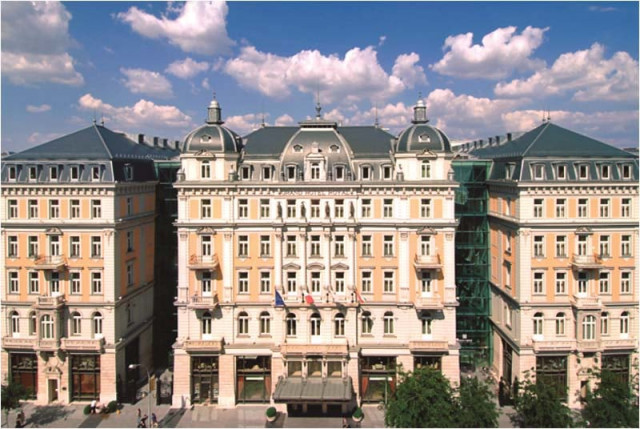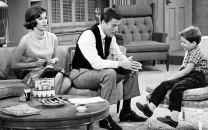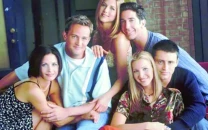Travel diaries: You can check out any time you like but you can never leave
Hungary’s Grand Hotel Royal has a legacy more vibrant than that of the ‘The Grand Budapest Hotel’

A front view of the Grand Hotel Royal in Budapest, Hungary. PHOTOS: FILE
After looking up my reservation on his computer, the concierge advises me to check in at the mezzanine level. He kindly escorts me up to the executive lounge, where I am greeted by a friendly client manager baring brilliant smile and delicious refreshments. I was at no ordinary hotel, you see. This iconic Budapest establishment was once known as perhaps the grandest hotel in Europe.
Originally opened for visitors of the Millennium Exhibition of 1896, Grand Hotel Royal Budapest might remind you of a widely popular film by Wes Anderson. No, the hotel has nothing “real” to do with the film, The Grand Budapest Hotel but the similarities are uncanny. I am here to excavate 120 years of its tumultuous history but I cannot help but spot a few individuals with a striking resemblance to characters picturised in the film.
Works of art: ‘Prof Wasihullah Khan spreads joy through his writing’

Arnold Schwarzenegger is one of the hotel’s most popular guests.
But let’s leave that for later on and get back to the Grand Royal. The establishment was a part of a celebration marking 1,000 years of the Magyar settlement in Hungary. It is said that the Magyar emerged east of the Ural mountains in continental Asia and found their home in this region, centuries after embarking upon their independent existence. So, 1896 became a big deal for Hungarians.
At the time of its inauguration, the hotel was equipped with the latest amenities and considered among the most luxurious hotels across the continent. It became known for its extravagant balls, cabaret and excellent hospitality. Even the Lumiere Brothers found the Grand Hotel Royal fitting for their first motion picture screening in Budapest. I, for one, am awestruck upon walking into the Grand Ballroom where the screening was held over a century ago. I cannot imagine the anticipation of the elegantly dressed guests in a climate-controlled room, decorated with all the fineries of renaissance architecture, as they waited to witness their first film. This was surely a room wherein fancily-gowned women and tuxedoed men must have waltzed about and gossiped with their friends, over carefully prepared meals.
Unfortunately, the classical music and idle chatter would only last till they were replaced by the thunder of firing tanks and fighter jets. Europe was at war and everything was about to change. During War War II, the Nazi’s actually took over the hotel building and converted it to their headquarters in Budapest. Walls that were once lined with gold leaf were pierced with bullets, the bellied laughter of visitors replaced by the screamed orders of Hitler’s men. When the Soviet tanks finally entered the city, they shelled the building until the Nazi’s were finally out.
Fact and fiction: Germany’s affair with Jihad
Following the war, the Grand Royal served as a hotel and also as an office building. In 1953, the building was restored but only to be occupied during the Hungarian Revolution Movement just three years later. The occupation lasted a few days but the Soviet tanks had returned. Once again, the Grand Royal found itself at the mercy of their artillery. Eventually, the Grand Royal was decimated and turned to dust.

The lounge terrace in the hotel
Some of you might consider this the end of my story but no. The foundations of the building are stronger than that for it was rebuilt and reopened once more in 1961. I mentioned at the beginning, some characters who reminded me of the fictional ones from Grand Budapest Hotel. Well, in August of 1961, soon after the reopening, an 18-year-old- named Tibor Meskál joined the hotel as an apprentice. Similar to Wes Anderson’s character Gustave, Tibor would pride himself on providing first-class service to the hotel’s guests. If you’ve watched the movie, you probably already know what I am referring to. But after five years of service, Tibor found a romantic interest in one of the guests and left Hungary for the next 30 years.
The Grand Royal, during that period, did not exactly enjoy the same luck. After the fall of the Berlin wall, countries in Central and Eastern Europe finally started to break free of the iron grips of communism. Everything was about to change again and there was no avoiding the change. It wasn’t until 2001 when a Maltese group finally decided to take over the property and restore its former glory. By this time, Tibor was back in town and when the hotel reopened in 2003, he made sure to be there to welcome guests to “his” hotel, once again.
Today, the hotel hosts the most important celebrities and statesmen from around the world. Everyone from Beckham to Schwarzenegger, to famous musicians and presidents, have enjoyed its unparalleled hospitality at the rebranded Corinthia Budapest. In fact, many tourists passing through Budapest drop by for a historical tour. I can tell you that Tibor is still here, having a blast while serving one guest to the other and if you happen to visit on the right day, you might even get him as your personal guide.
The writer is an international explorer who loves to tell stories about little known places around the world. He tweets @uroojqureshi
Published in The Express Tribune, April 18th, 2016.
Like Life & Style on Facebook, follow @ETLifeandStyle on Twitter for the latest in fashion, gossip and entertainment.



















COMMENTS
Comments are moderated and generally will be posted if they are on-topic and not abusive.
For more information, please see our Comments FAQ